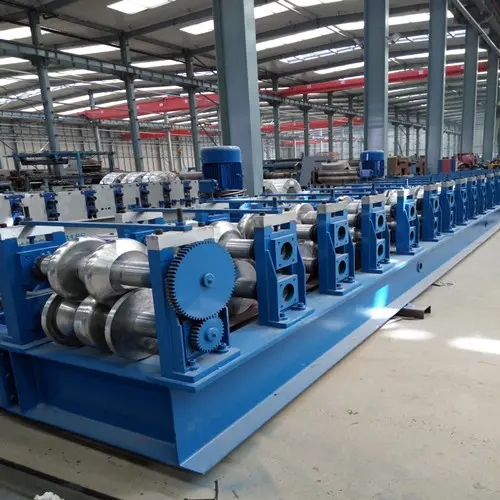
Understanding Strut Channel Roll Forming A Comprehensive Overview
Strut channel roll forming is a manufacturing process used to create a versatile and durable framing system widely adopted in construction and industrial applications. The strut channel, often made from steel or aluminum, features a C or U-shaped cross-section that can be easily integrated into various structural configurations.
The roll forming process begins with a flat strip of metal that is fed through a series of rollers. These rollers gradually shape the metal into the desired profile by bending it progressively. This continuous process allows for high volume production, ensuring consistent quality and dimensional accuracy. The use of roll forming makes it possible to create long lengths of strut channel without the need for extensive machining or cutting, which can be time-consuming and costly.
One of the key advantages of strut channels is their lightweight yet robust nature. This makes them ideal for mounting and supporting various components in both residential and commercial structures. Common applications include supporting electrical conduits, HVAC systems, and plumbing lines. The channels can be easily cut, drilled, and connected, providing flexibility and adaptability in design.

Another significant benefit of using strut channel systems is their ability to accommodate modifications and expansions. As projects evolve, it is often necessary to adjust support structures. Strut channels allow for quick alterations by adding or removing components, making them a practical choice for dynamic environments.
Furthermore, strut channel systems promote efficient space utilization. Their design enables them to be installed closely together, maximizing the use of vertical space without compromising strength. This feature is especially essential in settings where ceiling heights are limited or where equipment needs to be organized neatly.
In terms of aesthetics, strut channels can be finished with various coatings, including paint or galvanization, which not only enhance their appearance but also improve resistance to corrosion and wear
. This makes strut channels suitable for both indoor and outdoor applications.In conclusion, strut channel roll forming is a crucial process in modern manufacturing that produces essential components for structural support. The combination of durability, versatility, and ease of installation has made strut channels a preferred choice in a wide array of industries. As construction techniques continue to evolve, the role of strut channels will undoubtedly remain significant, helping to meet the demands of sustainable and efficient building practices. Whether for a small renovation or a large-scale project, strut channel systems offer reliable solutions that stand the test of time.